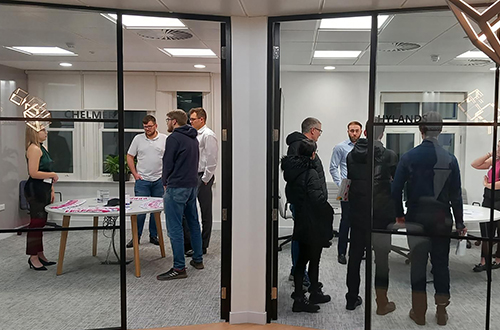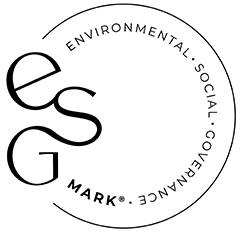In VAT most answers are found when the question ‘who’s supplying what to who?’ is addressed.
However, there are also a ‘hidden world’ of deemed supplies which, if not recognised, can result in substantial VAT costs, usually through the application of the Capital Goods Scheme (CGS).
Firstly a brief explanation of the CGS. When a property is bought, refurbished, extended, etc. and the cost of doing so is greater than £250,000 net and is subject to a positive rate of VAT, then that property ‘falls’ within the CGS. Works such as refurbishment has to be one project, not the culmination of several separate pieces of work, but a threshold not revisited since 1992 means that a lot of works are now putting properties into CGS.
Once in the CGS the business should monitor the use to which the property is put for a 10-year period. Often, through luck rather than judgement, the taxable use/ratio does not change so the initial VAT recovery remains unaltered. However, with property ownership and/or use becoming an ever-shorter cycle the impact of CGS must be understood.
For example, Wally’s Widgets Ltd buys a factory to make its widgets. The cost was £500,000 plus £100,000 VAT as the previous owner had opted to tax. As Wally’s Widgets Ltd is making fully taxable supplies from the property it doesn’t need to opt to tax the factory to reclaim the £100,000.
After four years, the factory is sold to the self-invested personal pension (SIPP) of Wally’s Widgets’ directors and then rented to the trading company. There is no option to tax on the property so no VAT due… so, no need for VAT advice, right?
Not so, an exempt disposal results in the CGS biting. In this example, the remaining six years are treated as exempt owing to the exempt disposal to the SIPP, which means that £60,000 is repayable to HMRC by the trading company.
This can be avoided by taking steps to make the supplies in the chain taxable. The VAT here should wash through for the SIPP and trading company.
Similar issues apply when there’s a corporate group re-organisation and there is a distribution in specie of the property, usually to a new holding company.
This is because this is seen as a deemed supply for VAT. So in the example above the solution should be the same, make the supply taxable (the outstanding periods of the CGS are treated as the same as the disposal so if taxable there should be no negative CGS adjustments).
However, unlike the sale to the SIPP, a distribution in specie is not a sale, so there’s no invoice to be raised. HMRC advises that a VAT certificate should be issued by the ‘gifting’ party, indicating the amount of output tax declared on the deemed supply.
Recently Rickard Luckin was involved in such a project and put the necessary steps in place to make the deemed transfer a taxable supply and prevent clawback of the VAT initially reclaimed on the property (used as a factory/warehouse by the trading company).
This resulted in the new holding company making a significant reclaim of VAT, which was queried by HMRC. The deemed supply and VAT certificate issues had to be explained to HMRC but they approved the repayment (£500,000+) to the new holding company.
The issue, of course, is that if the correct steps were not followed before the distribution, HMRC would’ve been able to clawback a substantial proportion of the VAT originally reclaimed by the trading company.
The issues are to identify where there is a supply (deemed or actual), but more importantly if the property(ies) involved are within the CGS?
Given the relatively low threshold and the 10-year length of the scheme, it is easy for entities to miss this vital issue; especially as the CGS may have been inherited from a previous entity where there has been a Transfer of a Going Concern.
The last point is even more difficult when a default response to the CGS section of a CPSE is often ‘N/A’ when in truth it is ‘don’t know’, as it is a little understood scheme - especially the potential ramifications for the acquirer.
For example, Rickard Luckin Ltd buys a smaller business advisory firm located in Chelmsford (NB this is purely hypothetical) as a Transfer of a Going Concern. The offices of the newly acquired business are surplus to requirements after relocating staff to our fabulous new offices in New London Road. So, these offices are sold.
The previous business incurred VAT on the purchase, but, like Wally’s Widgets Ltd, didn’t need to opt to tax to reclaim the VAT as they were making fully taxable supplies from the property. Therefore, the sale is exempt.
But, it’s only been seven years since the offices were bought, so 30% of the VAT reclaimed by the previous owner is repayable to HMRC by Rickard Luckin. The CPSE said ‘not applicable’ in the CGS section (which often really means don’t know).
Now, of course, this would never happen to a business like ours that has a team of VAT specialists to call on to advise as to the issues, but what about those businesses that don’t? Caveat Emptor.
For more information or for a particular enquiry, please contact Ian Marrow via our
online enquiry form
.
This article is from the latest edition of our Construction, Land & Property newsletter. To receive future copies of any of our newsletters directly to your inbox, please visit our preference centre to register your interest.
If you have any questions about the above, or would like more information specific to your circumstances, please enter your email address below and we will get in touch:













